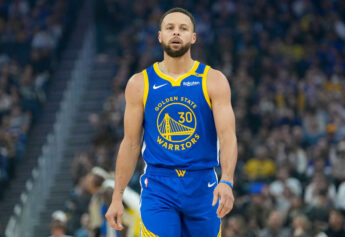A concussion-related lawsuit bringing together scores of cases has been filed in federal court, accusing the NFL of hiding information that linked football-related head trauma to permanent brain injuries.
Lawyers for former players say more than 80 pending lawsuits are consolidated in the “master complaint” filed Thursday in Philadelphia.
Plaintiffs hope to hold the NFL responsible for the care of players suffering from dementia, Alzheimer’s disease and other neurological conditions. Other former players remain asymptomatic, but worry about the future and want medical monitoring.
The suit accuses the NFL of “mythologizing” and glorifying violence through the media, including its NFL Films division.
“The NFL, like the sport of boxing, was aware of the health risks associated with repetitive blows producing sub-concussive and concussive results and the fact that some members of the NFL player population were at significant risk of developing long-term brain damage and cognitive decline as a result,” the complaint charges.
“Despite its knowledge and controlling role in governing player conduct on and off the field, the NFL turned a blind eye to the risk and failed to warn and/or impose safety regulations governing this well-recognized health and safety problem.”
The league has denied similar accusations in the past.
“Our legal team will review today’s filing that is intended to consolidate plaintiffs’ existing claims into one “master” complaint,” the NFL said in a statement. “The NFL has long made player safety a priority and continues to do so. Any allegation that the NFL sought to mislead players has no merit. It stands in contrast to the league’s many actions to better protect players and advance the science and medical understanding of the management and treatment of concussions.”
Mary Ann Easterling will remain a plaintiff despite the April suicide of her husband, former Atlanta Falcons safety Roy Easterling, who had been a named plaintiff in a suit filed last year.
Easterling, 62, suffered from undiagnosed dementia for many years that left him angry and volatile, his widow said. He acted out of character, behaving oddly at family parties and making risky business decisions that eventually cost them their home. They were married 36 years and had one daughter. She believes the NFL has no idea what families go through.
“I wish I could sit down with (NFL Commissioner Roger Goodell) and share with him the pain. It’s not just the spouses, it’s the kids, too,” Easterling, 59, told The Associated Press from her home in Richmond, Va. “Kids don’t understand why Dad is angry all the time.”
Roy Easterling played for the Falcons from 1972 to 1979, helping to lead the team’s “Gritz Blitz” defense in 1977 that set the NFL record for fewest points allowed in a season. He never earned more than $75,000 from the sport, his widow said. After his football career, he started a financial services company, but had to abandon the career in about 1990, plagued by insomnia and depression, she said.
“I think the thing that was so discouraging was just the denial by the NFL,” Mary Ann Easterling said. “His sentiment toward the end was that if he had a choice to do it all over again, he wouldn’t (play). … He was realizing how fast he was going downhill.”
The list of notable former players connected to concussion lawsuits is extensive and includes the family of Dave Duerson, who shot himself last year. Ex-quarterback Jim McMahon, Duerson’s teammate on Super Bowl-winning 1985 Chicago Bears, has been a plaintiff.
The cases are being consolidated for pretrial issues and discovery before Senior U.S. District Judge Anita B. Brody in Philadelphia.
The players accuse the NFL of negligence and intentional misconduct in its response to the headaches, dizziness and dementia that former players have reported, even after forming the Mild Traumatic Brain Injury Committee to study the issue in 1994.
“After voluntarily assuming a duty to investigate, study, and truthfully report to the public and NFL players, including the Plaintiffs, the medical risks associated with MTBI in football, the NFL instead produced industry-funded, biased, and falsified research that falsely claimed that concussive and sub-concussive head impacts in football do not present serious, life-altering risks,” the complaint says.
The problem of concussions in the NFL has moved steadily into the litigation phase for about a year.
According to an AP review of 81 lawsuits filed through May 25, the plaintiffs include 2,138 players who say the NFL did not do enough to inform them about the dangers of head injuries. The total number of plaintiffs in those cases is 3,356, which includes players, spouses and other relatives or representatives.
Some of the plaintiffs are named in more than one complaint, but the AP count does not include duplicated names in the total.
“We want to see them take care of the players,” Mary Ann Easterling said.


